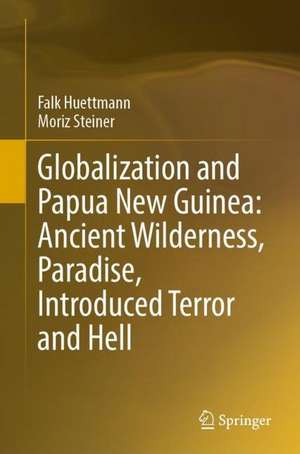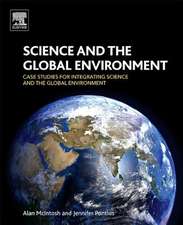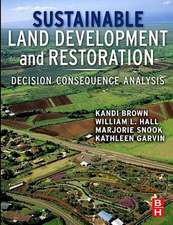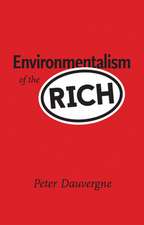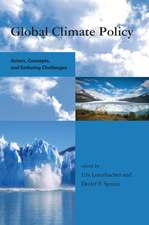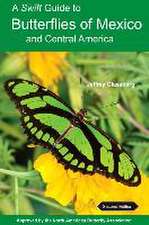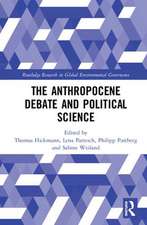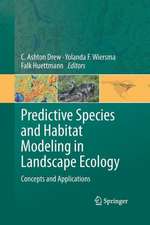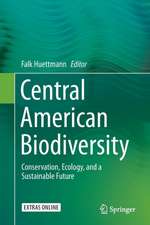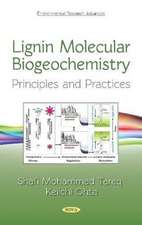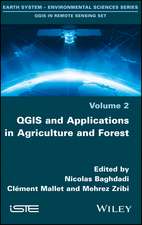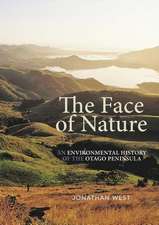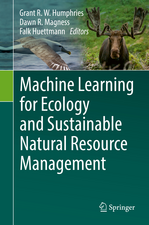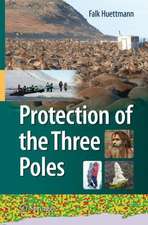Globalization and Papua New Guinea: Ancient Wilderness, Paradise, Introduced Terror and Hell
Autor Falk Huettmannen Limba Engleză Hardback – 27 apr 2023
| Toate formatele și edițiile | Preț | Express |
|---|---|---|
| Paperback (1) | 708.50 lei 38-44 zile | |
| Springer International Publishing – 28 apr 2024 | 708.50 lei 38-44 zile | |
| Hardback (1) | 1139.11 lei 3-5 săpt. | |
| Springer International Publishing – 27 apr 2023 | 1139.11 lei 3-5 săpt. |
Preț: 1139.11 lei
Preț vechi: 1389.16 lei
-18% Nou
Puncte Express: 1709
Preț estimativ în valută:
217.96€ • 228.19$ • 180.35£
217.96€ • 228.19$ • 180.35£
Carte disponibilă
Livrare economică 15-29 martie
Preluare comenzi: 021 569.72.76
Specificații
ISBN-13: 9783031202612
ISBN-10: 3031202619
Pagini: 697
Ilustrații: XXVI, 697 p. 285 illus., 277 illus. in color.
Dimensiuni: 155 x 235 mm
Greutate: 1.32 kg
Ediția:2023
Editura: Springer International Publishing
Colecția Springer
Locul publicării:Cham, Switzerland
ISBN-10: 3031202619
Pagini: 697
Ilustrații: XXVI, 697 p. 285 illus., 277 illus. in color.
Dimensiuni: 155 x 235 mm
Greutate: 1.32 kg
Ediția:2023
Editura: Springer International Publishing
Colecția Springer
Locul publicării:Cham, Switzerland
Cuprins
Chapter 1: Papua New Guinea (PNG)…the new nation and a global experimental sustainability success of a re-newed tribal governance: Insights from the misunderstood modern control study.- Chapter 2: The land of Papua New Guinea: A quick conservation reader for what CEOs and Directors ought to know.- Chapter 3: The oceans surrounding Papua New Guinea: A habitat view for sustainable fisheries and an acknowledged lack of carrying capacity knowledge of the ocean ecosystem.- Chapter 4: Deep Times of Papua New Guinea with over 47,000 years nothing ‘relevant’ happening: Why it matters for the world’s future as a leading sustainable steady-state economy role model and a Sustainability Super-Nation.- Chapter 5: Colonial After-Times in Papua New Guinea: Urgency for Repatriation, Biodiversity Compensation and Fair Treatment to Assure a Better Global Future.- Chapter 6: Biodiversity of Papua New Guinea (PNG): Attempting a More Meaningful Conservation Description and Approach of its Use, Co-Evolution, Generic Status and Grim Outlook.- Chapter 7: Papua New Guinea as a global sustainability leader: Confronting per capita metrics with GIS layers and social engineering.- Chapter 8: Fundamental Humanitarian Sustainability issues in Papua New Guinea: SDGs to fail us further on biodiversity and wilderness conservation.- Chapter 9: In Bed with a Big Bad Neighbor for Life: The Middle Power of Australia as a Domestic, Cultural, Political, Material and Environmental Sustainability Problem for Papua New Guinea and beyond ?.- Chapter 10: Betel nut, Coconuts/copra, Chocolate, Strawberries, Coffee, Apples, Spam and Fish in Papua New Guinea: From highly-bred species and sustainability concepts over diseases and DNA into global market repercussions and wholesale (environmental) bankruptcy.- Chapter 11: Papua New Guinea: Australia’s failed dream, some failed states and the widely acknowledged outer facism.- Chapter 12: Destruction by Mining and Drilling on a global scale, with Papua New Guinea fully embedded: A meta-analysis contribution about the resource curse, global bankruptcy, destruction, terror and death favors Mother Earth.- Chapter 13: Seafloor mining around Papua New Guinea: Just another ‘Big Deal’ gone bust.- Chapter 14: “Come and Dive” in Papua New Guinea: Surfing, Reefs, paper park MPAs, and marine conservation issues in PNG beyond sharks, whales, crocodiles, seagrass and ‘developing a resource’.- Chapter 15: Timber and Forestry in Papua New Guinea: Still no publicly available forest inventory data or growth & yield tables despite Google Earth, Microsoft Cloud, NGOs, international development aid, REDD, satellites and drones applied last decade for a science-based forestry.- Chapter 16: Papua New Guinea as a paradise (of weaponized diseases): AIDS/HIV, African Swine Fever, Malaria, Avian Influenza, weaponized viruses and wider Public Health ?.- Chapter 17: Papua New Guinea and Climate Change (and REED/REDD+): The ‘Western Carbon Cult’ as a new hostile relationship that was friendly though throughout most of Mother Earth’s history.- Chapter 18: Sustainability Impacts from the Australian Arc of Perceived Terror, Tyranny and ‘Development Aid/Help’ in Papua New Guinea and some surrounding regions.- Chapter 19: Papua New Guinea, Education, Science and Space Exploration: A primer, and the bad roles of Christianity and Oxford/Cambridge, again, calling for an improved and globally inclusive STEM-type Cybereducation for ‘the bush’ and global sustainability.- Chapter 20: Case study: The YUS (Yupno, Uruwa and Sam rivers) Landscape, Huon Peninsula in Papua New Guinea as an ongoing and world-leading success story despite international coffee and National Park model landgrabs.- Chapter 21: Case Study on Outsider Impacts by Exploration, Mining, Science and NGOs: An honest look at Crater Mountain in Papua New Guinea.- Chapter 22: “Pacifism as a Western Pathology” ? A case review of Bougainville terror, civil war and independence, civil unrest,missing mining impact studies, and why the nation construct of modern Papua New Guinea could fall apart soon due its colonial creators.- Chapter 23: Case study of Urban Ecology: Who runs the shots in Port Moresby (POM) ? An attempted exposure and review of cliques and their profiles in a global crime hotspot.- Chapter 24: RAMU sugar in Papua New Guinea from Fiji: Take-home lessons from another perverted project based on the neoliberalism principle.- Chapter 25: Role of outside nations in Papua New Guinea’s sustainability model: China, U.S. UK, the EU, Russia, Australia, NZ and Japan need Bob Marley and the Dalai Lama coming to the rescue.- Chapter 26: Papua New Guinea from a modern Anthropology perspective: PNG 1, Western World 0. Bob Marley and the tribes remain the judges.- Chapter 27: 100 open access GIS layers and their analysis and message: Human Footprints of the last 100 years destroyed a civilization that is c. 50,000 years old, and more.- Chapter 28: Why are there no Squirrelsin Papua New Guinea ? Inference from a global open access data prediction model.- Chapter 29: A SWAT and PESTL analysis for PNG using 113 GIS Layers: Data cannot lie.- Chapter 30: Some very easy lessons from Papua New Guinea’s “Garden of Abundance” for the wider global good: Indigenous, Tribal and Marxist views, Bob Marley as the public role model, destructive Neoliberalism, Reality and Globalization failures are not Rocket Science.- Chapter 31: Bringing it all home: Where on earth is Papua New Guinea, its society, their environment and well-being heading ? Examples of Western Failure and Forwards to the Roots, in your own garden without social engineering!.
Textul de pe ultima copertă
This book aims to present a reality view for Papua New Guinea based on many years of first-hand field work and research accounts. It further assesses sustainability in the light of 47,000 years of a self-sustained type of civilization without bad global impacts. This book contrasts the modern sustainable development failures from the colonial times onwards, as promoted by the ‘western world’, namely Australia, the UK, EU and the U.S as well as Japan and now, China, in times of globalization, Trump’ism and royal governance (Papua New Guinea is still part of the British Dominion and of the Antarctic Treaty etc). This assessment and book is the first of its kind also employing modern data analysis, Landscape Ecology principles (patterns and processes, telecoupling) and Geographic Information Systems (GIS) with Open Access data focusing on ecological economics, marxism, socialism and contrasting it with current capitalism and neoliberalism that Papua New Guinea is fully exposed to. Throughout the 31 book chapters various aspects are covered how a further insistence on the ‘new’ Sustainable Development Goals (SDGs) and so-called Development Aid will result in unwanted side effects and perverse outcomes for Papua New Guinea and for the world in times of wider ‘global change’ and unprecedented man-made crisis.
Caracteristici
Based on many years of first-hand field work and research accounts Warns about adverse effects of global 'sustainability' policies for the country of Papua New Guinea Shows a first wider and more holistic assessment based on principles of open access and ecological economics
